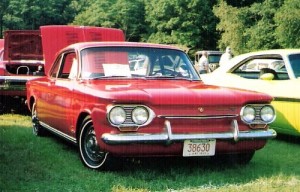A car will usually signal that something isn’t right long before it has a major failure. But if the warning signs are ignored, any of those problems could lead to expensive repairs in the future or even leave you stranded on the side of the road.
There was a case where a 2002 Chevrolet Blazer had developed a small coolant leak from its radiator. The mechanic who spoted that problem stated that repair would cost Ksh 32,400 but the customer decided to put off the fix. Within a few weeks, the Blazer’s engine overheated, blew a head gasket, and needed a replacement of the cylinder heads, which cost the owner roughly Ksh162,000. That scenario underscores the importance of monitoring your car’s health and taking care of small problems before they snowball into service disasters.
Following the recommended maintenance schedule in your vehicle owner’s manual is usually enough to avert many large problems. Routine maintenance items such as oil changes and tire rotations are performed on time, and during the accompanying inspections a trained technician can spot signs of trouble: leaks you might not have noticed, tiny cracks on the accessory belt, worn brake pads, or indications that front-end joints and bearings are wearing out.
To help prevent these issues, check out these tips to keep your car in top condition.
- Check the maintenance schedule in your owner’s manual to see what service is recommended and how often. Follow it scrupulously for as long as you own the car. There are usually different schedules for normal and severe driving conditions; the normal one should be sufficient for most drivers.
- Mark your calendar with estimated dates for services such as oil changes, tire rotations, and fluid flushes.
- New noises are not normal. If you hear something odd when accelerating, braking, or turning, have it checked by a mechanic.
- At least once a month, check the levels of the car’s fluids, such as oil, coolant, and brake fluid. The owner’s manual usually has instructions that are quite specific and easy to follow.
- At least once a month, check the air pressure in each tire, including the spare, when they’re cold. If necessary, adjust the pressure to match the carmaker’s recommendation. Tire-inflation information is usually found on a placard in the driver’s-side door jamb. The recommended pressure for a space-saver spare is on the tire.
- If your mechanic recommends additional maintenance services not specified in the owner’s manual, ask why they’re necessary. If you’re skeptical, check with other mechanics for additional opinions and cost estimates.
Adopted From: blogs.consumerreports.org/cars/2009/12/how-to-avoid-costly-car-mistakes.html






![Top 20 Used Cars to Avoid Buying in Kenya – [PHOTOS]](../../../blog/wp-content/uploads/2013/11/top-used-unreliable-cars-to-avoid2-80x60.jpg)

![Top 20 Used Cars to Avoid Buying in Kenya – [PHOTOS]](../../../blog/wp-content/uploads/2013/11/top-used-unreliable-cars-to-avoid2-100x70.jpg)





